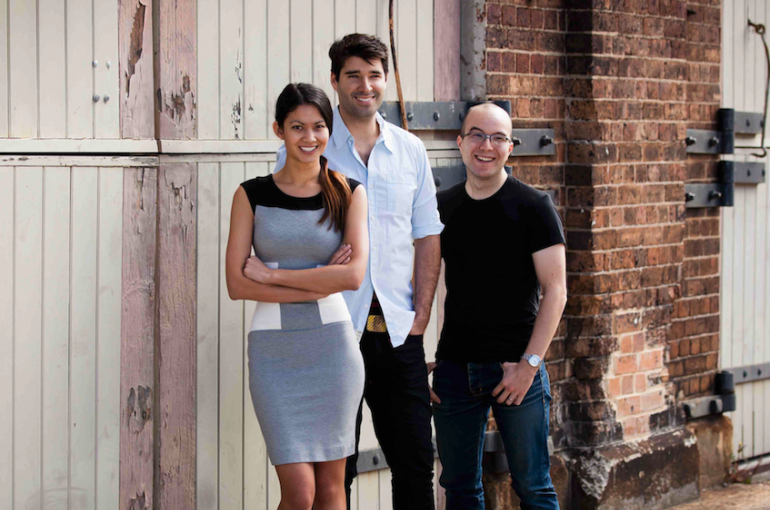Melanie Perkins is an ambition-driven creative, making transformative impacts on the world of graphic design. She is CEO and co-founder of Canva, which launched in 2014.
Kochie’s Business Builders editor Cec Busby untangles the truth behind Canva’s ‘overnight success’ in this interview with Perkins.
Starting from scratch
Melanie Perkins’ passion for design has been present throughout her whole life. At the University of Western Australia, she taught design programs despite studying psychology and commerce.
It was the experience of her students that led Perkins to realise the counterintuitive nature of design programs as they struggled to learn the basics.
“You shouldn’t have to take an entire semester just to learn where the buttons of photoshop were,” she explained.
“You also shouldn’t have to learn a different tool for everything that you wanted to create. You should be able to jump in and start using it.”
From this experience, Perkins had a desire to make a change. She dreamed of a suite of design programs housed on one platform, with more straightforward tools to use and allow collaboration. It would offer simple templates and end-users would no longer grapple with the basics of editing and creating.
However, with little knowledge on starting a business, Perkins had to learn through experience as she took her idea to reality.
From running a small business to a behemoth
The popularity and success of Canva may seem as if it occurred overnight, but the learning and development process took more than a decade.
Her first business, Fusion Books, was the proving ground. Bootstrapping the business meant she juggled everything herself, learning on the go, but it gave her valuable experience when founding Canva.
“I was doing customer service, quality assurance, all of the product management and marketing,” Perkins says.
Then, as the business grew, she could let go of more responsibility.

Canva co-founder Melanie Perkins.
“Every time a new person starts, it’s like giving away just another hat and then another hat. And then you’re like, how on earth was I doing all these things?” she said.
Going from a solo operator to a co-founder of a digital business, Perkins still had a lot to learn.
“We had to figure out how to employ people for the first time. We had to figure out how to work with people, set up an office, all of those sorts of challenges I never would’ve imagined,” she said.
The experience of starting from nothing to growing a company with over 1500 employees meant that being agile was essential.
“It’s a continuous process of letting go,” she revealed, “because, at the start, you do everything yourself.”
Canva’s big, bold purpose
The years building up to Canva’s release to the public helped Perkins find what was true to her business goals and the impact she wanted to make.
“Having a large goal is critical to my being. If I don’t have a big goal, I feel lost. I always like to have a big goal that I’m working towards,” she said.

Canva co-founders and now husband and wife, Cliff Obrecht and Melanie Perkins
The motivation of setting goals is embedded in her business,
“I think having one of the values that we have explicitly stated at Canva is to set crazy big goals and make them happen. And I happen to be very inspired by crazy big goals,” Perkins said.
“We have a two-step plan at Canva. Step one is to build one of the world’s most valuable companies. No biggie. Just a little one. Step two is to do the most good we can do.”
She believes that Canva is making small strides in accomplishing these goals but still has a long way to go. Continuing, she is figuring out how to use the platform and incredible community to help achieve the world’s goals.
Empowering businesses
Perkins plan to become one of the world’s most valuable companies has been successful as Canva is now available in 190 countries and 100 languages.
“You can now print your design on paper in 44 countries. You can print your design as a t-shirt. You can turn your design into a website. There are all sorts of things that you can do because we want to empower anyone to design,” she said.

Canva CEO Melanie Perkins in 2016
Perkins has faced many obscure challenges to make Canva available in these countries.
She revealed that to make the platform accessible in Arabic, Hebrew and Urdu languages, they had to go through the tricky process of flipping the program to be accessed from right to left.
“That was a huge initiative as well as a considerable engineering effort. But now we really can empower the whole world to design,” she said.
“That’s been our philosophy right from the start. So, it’s cool to see it happening, but there’s still so much more we need to do.
“There are many people, and then obviously millions of customers. So, we need to be thinking about them in everything that we’re doing.”

Canva co-founders Mel Perkins, Cliff Obrecht and Cameron Adams in 2015.
- This story was first published in March 2022 on Kochie’s Business Builders. You can read the original here.
Credit: Source link


Comments are closed.